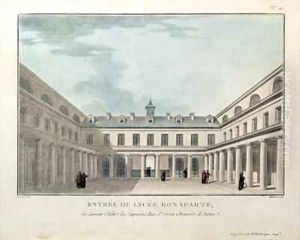Durand Paintings
Asher Brown Durand, born on August 21, 1766, in Jefferson Village, now Maplewood, New Jersey, was a central figure in the Hudson River School of landscape painters. His career, which spanned from the late 18th century into the mid-19th century, reflects a significant transition in American art, moving from neoclassical portraiture to a profound emphasis on naturalism and landscape as embodiments of the national identity and spirit.
Durand's early career was marked by his work as an engraver. He achieved recognition for his engraving of John Trumbull's 'Declaration of Independence' in 1823, which established his reputation and provided him with financial stability. However, his interactions with Thomas Cole, a leading artist of the Hudson River School, in the 1820s, profoundly influenced his shift towards landscape painting. This transition was emblematic of a broader movement in American art towards a focus on the sublime and picturesque landscapes of the American wilderness, seen as both a reflection of divine creation and a source of national pride.
Throughout the 1830s and 1840s, Durand's work increasingly celebrated the natural beauty of the American landscape, emphasizing careful observation and a detailed, realistic approach. His 1849 letter to The Crayon, advocating for artists to study nature directly, encapsulates his philosophy and influence on American art. Works such as 'Kindred Spirits' (1849), which depicts Thomas Cole and the poet William Cullen Bryant in a sublime American landscape, and 'The Catskills' (1859), showcase his mastery in portraying the intricate details of nature and the emotional depth of the natural world.
Durand's contributions to American art were not limited to his paintings. As a founding member of the National Academy of Design in 1826, he played a crucial role in the development of art institutions in the United States. His advocacy for the appreciation of the American landscape as a subject worthy of artistic endeavor helped to forge a distinctly American identity in the arts.
Durand passed away on September 17, 1845, in Maplewood, New Jersey. His legacy is not only in the canvases that capture the transcendent beauty of the American wilderness but also in his influence on subsequent generations of American landscape artists. Through his work and teachings, Durand helped to establish a tradition of American landscape painting that celebrated the natural environment as a source of inspiration, spiritual renewal, and national pride.
